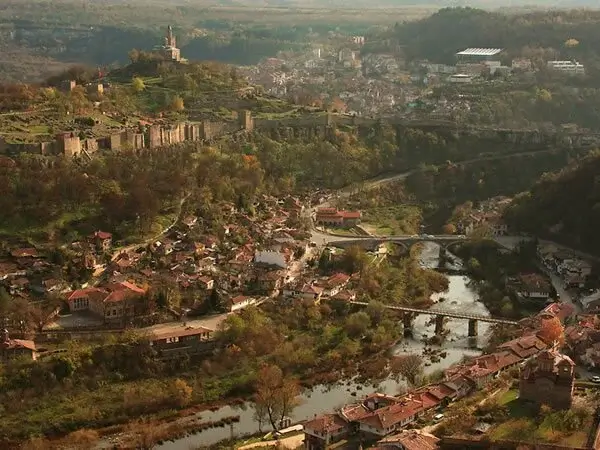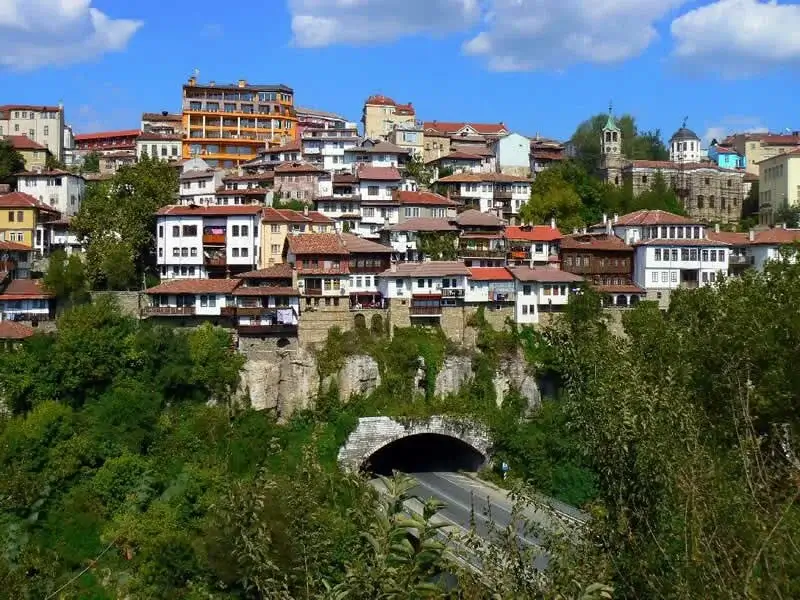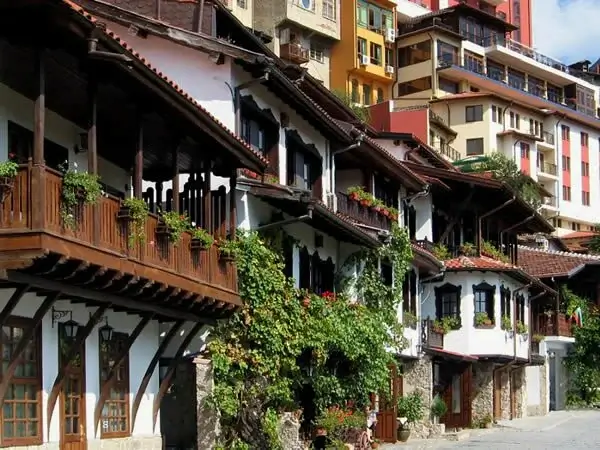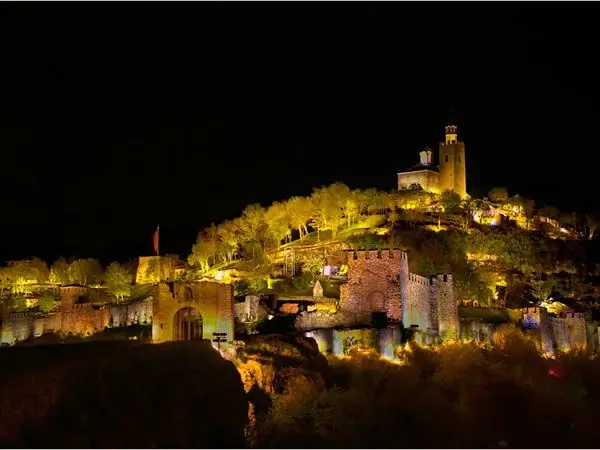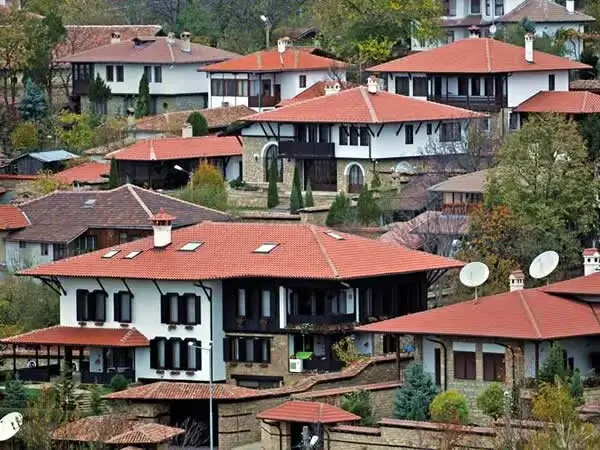The city experienced its period of splendour between the 12th and 14th centuries, when the city was an important political, religious and cultural centre of the first order in the Kingdom of Bulgaria and when magnificent palaces, monasteries, churches, fortifications, bridges and great buildings were erected. This is the period when Veliko Tarnovo became the capital of the Second Bulgarian Empire, following the 1185 uprising against the Byzantine Empire.
The city is rich in museums and historical sites, combined with a lively nightlife driven by the students of one of Bulgaria’s largest universities.
The best way to get to know Veliko Tarnovo and enjoy its architecture is to walk along the cobbled streets.
The city is relatively large but in the old town the sights are fairly close to each other and a collection of traditional Renaissance houses are scattered in the hills around the Yantra River. There is a lot to see and do in Veliko Tarnovo. The many unique monuments from the Renaissance period, craft workshops and many cafés are not to be missed.But to get a better sense of Veliko Tarnovo’s history it is best to go to the top of Tsarevets Hill, from where you can see the whole town.
At the top of the hill the imposing Tsarevets fortress dominates the city from the top of a rocky hill with an impregnable appearance. The well-preserved stone fortress surrounds the entire hill and numerous archaeological excavations from different periods were found on the site. The representative and administrative buildings, related to the functioning of the authorities and royalty, were located in this independent fortress.
A special attraction in Veliko Tarnovo is an audio-visual sound and light show that takes place from the end of March on Tsarevets Hill at dusk and illustrates the history of the town.
To the northwest of Tsarevets is Trapezitsa Hill with the foundations of 17 excavated churches. Between the two hills lies the beautiful Asenova Mahala with the churches of St. Dimitar, Saints Peter and Paul, St. George, and the Assumption of the Blessed Virgin, as well as the “Bishop’s Bridge”.
Arbanasi
The small village of Arbanasi is a picturesque hamlet situated only 4 kilometres from Veliko Tarnovo.
The site preserves extraordinary fortified mansions from the 15th century, many of which have been converted into house museums. Some churches are also preserved, among which the Church of the Nativity (17th century) stands out for its simplicity and for the frescoes that decorate its interior. You can also visit the church of the Archangels Gabriel and Michael.
In the village you can also visit the street market where antiques and typical objects are sold. The best way to get to Arbanasi is to walk the 4 kilometres from Veliko Tarnovo to Arbanasi. You can also take a minibus from the market or, alternatively, you can take a taxi, which is not expensive, but it is advisable to ask about the cost of the trip beforehand.How to get from Sofia to Veliko Tarnovo
- Bus: The trip from Sofia costs about 17 Leva (€9). Buses leave every hour from Sofia Central Bus Station.
- Car: Take the road connecting Sofia with Burgas. The journey takes almost three hours.
- Train: from Sofia you have to change trains in the neighbouring town of Gora Oryahovitsa, the journey takes about 4 hours and costs about 14 Leva. Once there, we must take a city bus or taxi to travel the 5 kilometres to Veliko Tarnovo.


